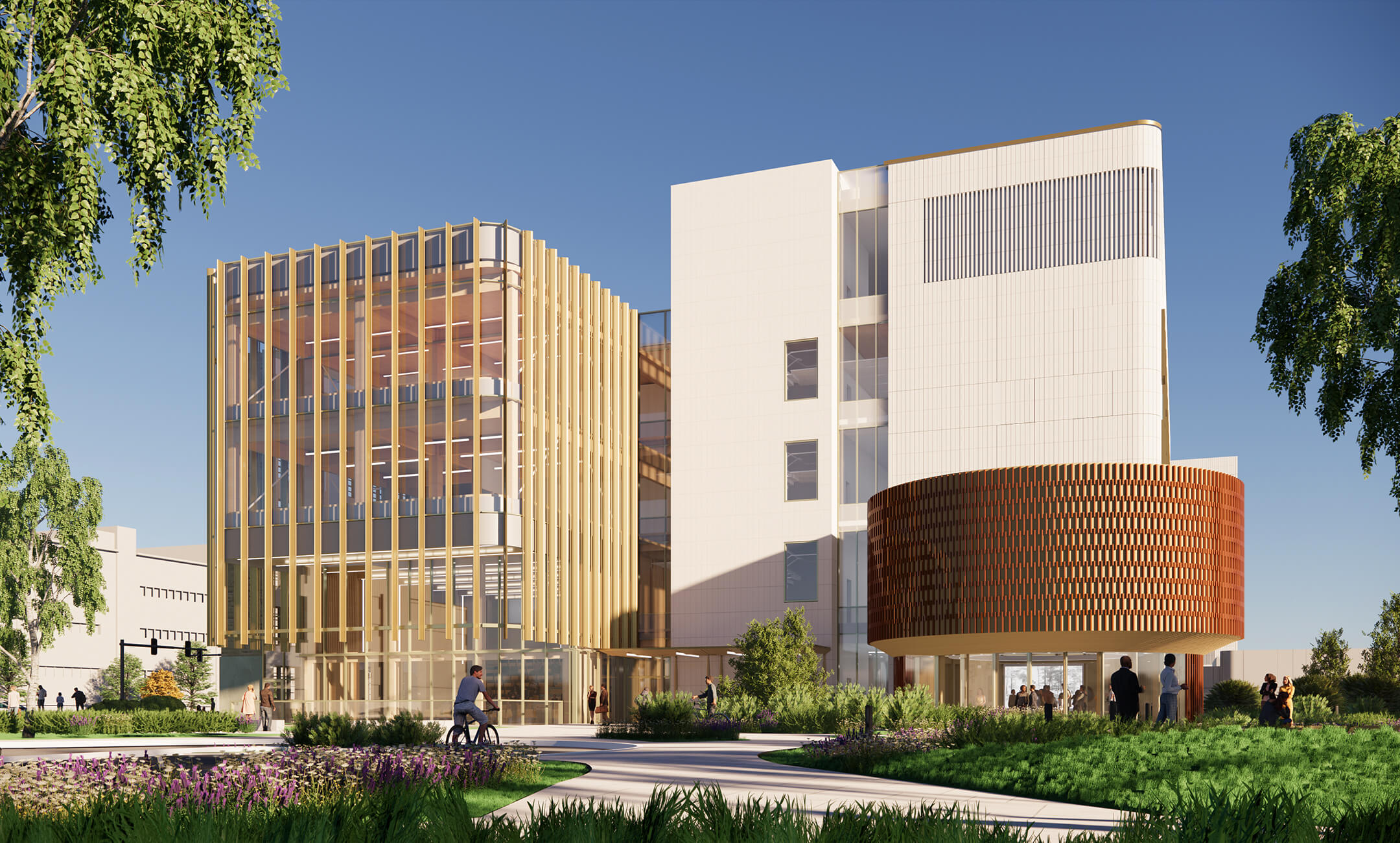The Globe and Mail: New Brunswick research hub honours past, present and future

For more information, please contact:
Andrea Chin, Communications Director
Email: [email protected]
Peggy Theodore, Principal
Email: [email protected]
The Atlantic Science Enterprise Centre (ASEC) in Moncton, New Brunswick is featured in an article by David McPherson for The Globe and Mail.
A new next-gen science research hub in Moncton isn’t just setting the stage for groundbreaking discoveries – it’s leading the charge on net-zero design and rebuilding decades-long relationships with Indigenous and local communities.
When complete in 2031, the Centre will be one of five Laboratories Canada science hubs that will be home to more than 700 employees from four distinct federal organizations: Fisheries and Oceans Canada, Environment and Climate Change Canada, the Canadian Food Inspection Agency and National Research Council Canada.
The facility aims to reduce net-zero greenhouse gas emissions through its use of on-site geothermal fields, which don’t burn fuel to create electricity. It will also seek to achieve LEED Gold certification by using mass timber – which uses minimal fossil fuels during manufacturing – for part of the construction.
In addition to its climate-related goals, the ASEC project will provide workspace that encourages collaboration amongst researchers and staff.
“The scientists brought to us this laboratory neighbourhood concept,” says Peggy Theodore, principal architect at Diamond Schmitt. “The intent is to bring people together based on activity rather than on department.”
Working with Mi’kmaq Elder Noel Millea, Ms. Theodore notes Diamond Schmitt developed a ‘clan system’ plan layout that reflects distinct neighbourhoods and encourages interaction. “The traditional Mi’kmaq Clan system provided a framework to give an identity to different floor levels and lab neighbourhoods,” she says. “These clan associations not only promote cross-collaboration but also provide an opportunity for further education.”
Elder Millea says this collaboration is crucial to save and protect the environment. “All of these clans have to work closely together to make sure the abundance of resources we’re enjoying today is preserved for the next seven generations.”
Moncton, like much of New Brunswick, is located on the traditional territory of the Mi’kmaq nation.
The Canadian government has said it’s committed to ensuring Indigenous communities benefit from major infrastructure projects like ASEC, which is why local First Nations were heavily involved in the project.
“The project team was open from the outset to spiritual engagement and an ongoing learning process as a way to understand and to reconcile,” Elder Millea says.
Read the full article in The Globe and Mail here.